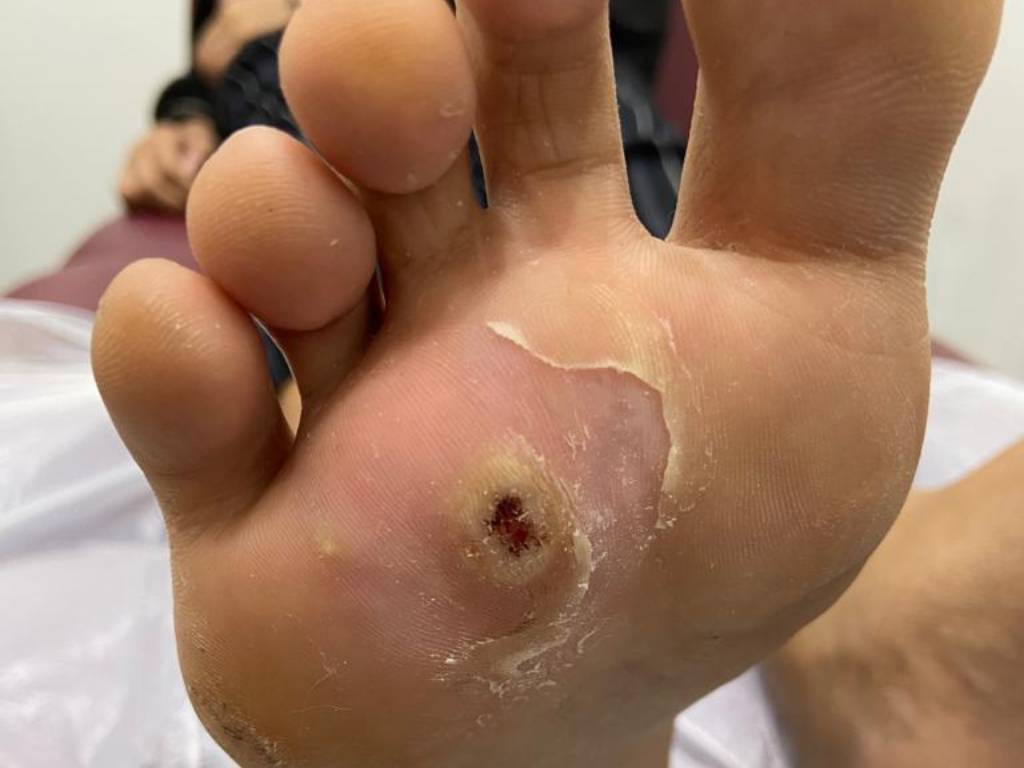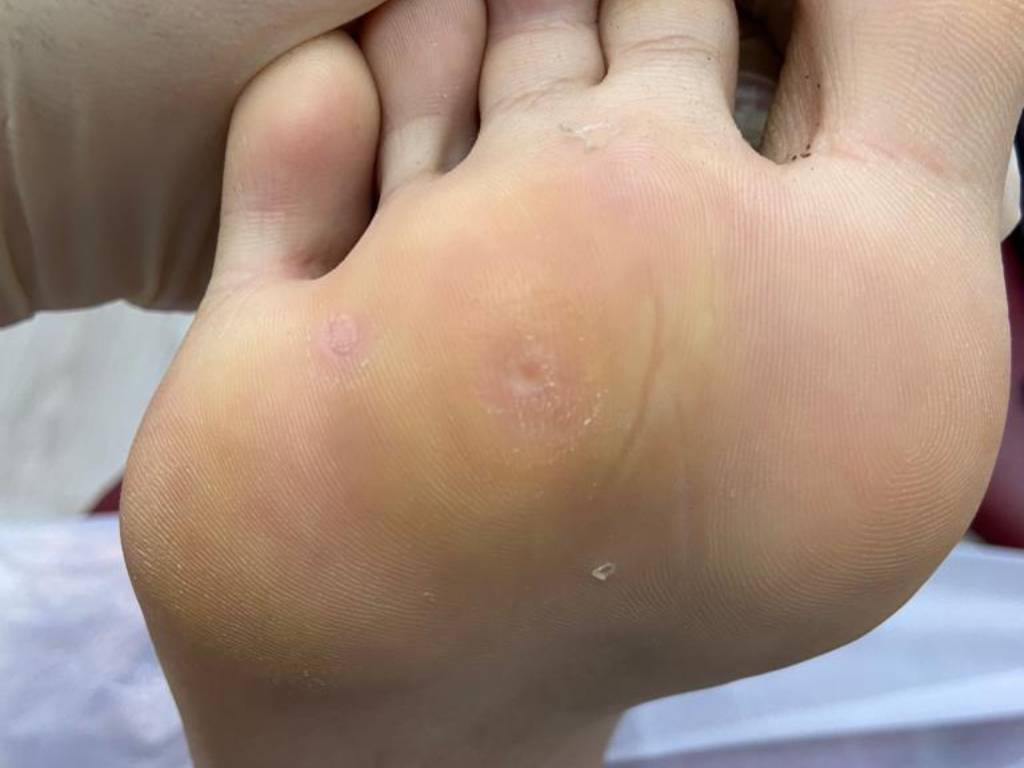A callus develops on the foot to protect that area from excessive pressure and friction. This condition can differ in levels of severity. Mild cases affect only a few small areas of the foot with minimal callus growth while extreme cases can affect the entire plantar foot.
If left untreated, calluses can grow easily, becoming thicker, painful, and more difficult for patients to manage. The base of the callus can also become fibrous.
Callus formations are particularly dangerous for those with underlying vascular or metabolic diseases such as diabetes, as they can lead to underlying tissue breakdown and ulcerations.
Successful Patient Outcomes


In-clinic debridement of the callus may be carried out within a 30-minute appointment. This would extend to 1 hour for thicker, larger, or more chronic callus formations.
There is no pain or downtime with podiatric callus removal. However, the underlying cause must be addressed. In 95% of cases, callus formations are caused by pressure and friction, which can be rectified via the use of orthotic devices to offload pressure, wearing better footwear, and paying particular attention to the feet at home by using emollient regularly on areas of dry skin.
What happens if I don’t treat it?
If callus formations are left untreated, they can result in underlying scarring and increased pain in the area leading to an altered gait pattern. In some cases, an infection can set in as well, either from neglect or poor self-treatment.
What can go wrong with callus?
Patients often try to treat calluses on their own at home using acid-based products or small blades to cut out the lesion. Unfortunately, these home treatments can cause wounds to develop, introducing infection to the lesion. If left untreated, the infection can extend to the bone or lead to further scarring of the lesion.
What home treatments are recommended?
Gentle home treatments are generally recommended for maintenance once the calluses have been debrided by an experienced podiatrist. Examples of home treatments include the use of a highly moisturising emollient on the feet daily and gentle exfoliation with a file once every few weeks.
